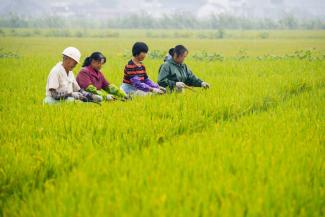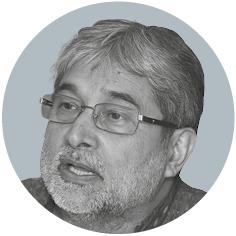Asian giants
China is ahead of India

It is generally agreed that “growth” and “development” are not the same. The former term has a narrow, strictly economic scope, whereas the latter also relates to a broad range of other indicators of well-being, including social, political and cultural aspects. However, scholars disagree on how growth and development are interrelated. Relevant questions include: which of the two comes first? How can policymakers bring both about? What is the role of the market? And what is the role of the state?
Comparing China and India helps to understand these issues better. This brief essay summarises some insights from the long-standing, controversial and complex debate concerning the two countries’ development trajectories. But two fundamental truths, which are both borne out by historical evidence, need to be stated first:
- Both the market and the state have had profound roles in promoting growth and development. It does not make sense to think in terms of either/or. What really matters is the appropriate balance between the two. The respective roles, moreover, are not permanently fixed, but keep evolving. Governments clearly have a huge responsibility for ensuring that the prerequisites for dynamic market interaction are in place. Indeed, exclusively market-driven growth occurs very rarely, if at all. Especially in the early to middle stages of economic transformation, markets on their own hardly address very basic concerns, such as building the kind of infrastructure that serves all or ensuring minimal social protection for everyone. At the same time, climate change and other harmful global environmental trends show that market transactions all too often have unintended side effects. Governments definitely have a role to play.
- It is a fallacy to equate socialism with authoritarianism and capitalism with democracy, as western observers tend to do. Both equations are profoundly misleading. Democratically elected governments have opted for socialist policies, and autocratic rulers have endorsed market principles. Moreover, there is neither a clear correlation of democracy with developmental success nor one of despotism with failure. In either scenario, the kind of market-state synergy that facilitates development may occur (see box).
The empirical evidence shows that development success results from the interplay of market dynamics with government action. Given the right synergy, basic needs such as health and education can be taken care off at comparatively low levels of material prosperity. Indeed, Bismarck laid the foundations of western welfare states in the late 19th century in Germany when his country was recently unified and began to industrialise large scale (see my contribution in Focus section of D+C/E+Z e-Paper 2019/12).
For related reasons, Kerala has been topping the rankings of Indian states for literacy rates and life expectancy in recent years, though measured by its gross domestic product per head, it is only number nine. Observers agree that governance has been particularly good in Kerala, ensuring the appropriate synergy of state and market. As will be shown below, the comparison of India with China also shows that social indicators do not simply depend on GDP.
India became independent in 1947, and China became the People’s Republic in 1949, after the communist People’s Liberation Army triumphed in the civil war. At the time, both countries were severely impoverished, not least due to the imperialist exploitation they had suffered for centuries. Until the 1980s, China’s economy was state-controlled, in contrast to India’s, which was state-led and mixed, with private-sector business operating with considerable liberty on markets.
In the early 1950s, standard economic indicators such as per capita income or infrastructure constraints were not much different for China and India, though India’s were generally somewhat better. According to World Bank data, both countries trudged along with reasonable success for the next three decades. Measured in US dollars at constant 2010 prices, China’s GDP per capita increased from $ 141 to $ 360 in the years 1961 to 1981. The comparable figures for India were $ 335 in 1961 and $ 438 in 1981. India was ahead, but advancing more slowly.
If one considers data for school enrolment, literacy, infant mortality et cetera, moreover, it is quite clear that China was outperforming India even by 1980. For example, life expectancy at birth was 67 years in China, but only 54 years in India. China’s literacy rate was 65.5 %, but India’s was only 43,8 %. Quite obviously, India’s higher per-capita income did not mean that Indians lived longer or better.
The colour of the cat
In the 1980s, both countries gradually changed their approach. In either case, the top leadership appreciated the “logic of the market”. China shifted from state control to a mixed economy, and India from a mixed economy to an increasingly market-driven system. Chairman Deng Xiaoping famously stated that the colour of the cat does not matter as long as it catches the mice, signalling a willingness to experiment with market forces, first in special economic zones, later throughout the entire country (see Ayumi Konishi in D+C/E+Z 2014/12, p. 460).
India’s policymakers, incrementally but steadily, pushed for pro-market reforms during the 1980s. That culminated in a decisive shift away from dirigisme after a financial crisis in 1991 (see Salman Anees Soz in Focus section of D+C/E+Z e-Paper 2018/08).
The new policies led to faster GDP growth. From the 1980s on, both economies have consistently been among the fastest expanding internationally. However, growth was more impressive in mixed-economy China than in increasingly free-market India. By 1991, China’s GDP per head was $ 786 (at constant 2010 prices), while India’s was $ 575.
Since then, the gap has widened further. The most recent data the World Bank makes available are for 2018, when China’s GDP per head was $ 7752 and India’s was $ 2100. Its statistics also show China leading in regard to social indicators. Life expectancy, for instance, was 77 years there in 2018, compared with 69 years in India. China’s literacy rate was 96.8 %, but India’s only 74.4 %.
Structural change has been much faster in China. The share of the workers in agriculture dropped from 60 % in 1991 to 27 % in 2018. In India, that share only decreased from 63 % to 44 %. Possibly the most impressive feature of China’s structural transformation is that the country became the “factory of the world”. By contrast, share of manufacturing in India’s GDP and workforce has largely stagnated, while the service sector is now employing more people. The problem, however, is that many of them only have low-skill, low-income jobs.
Run by a communist dictatorship, China has clearly outperformed India both in terms of growth and social development. The communist regime has done a good job of maintaining macroeconomic stability, while striving to achieve several development objectives through an elaborated mix of industrial policy, trade policy and social-protection policies. It has fostered unprecedented leaps in higher education, research and development. Infrastructure improvement has been spectacular too. At the same time, the Chinese state still plays a much stronger role as owner and shareholder of major corporations than the Indian one does. Undeniably, the synergy resulting from market-state interaction has been very effective in the People’s Republic.
Today, both countries face huge challenges. Inequality is rising. Informal and insecure employment affects far too many people. Environmental problems including desertification, pollution, the impacts of climate change and others are increasing. In both countries, governance is becoming more repressive, moreover, and political antagonism between the two Asian giants has been intensifying in recent months.
Nonetheless, Indian scholars find China’s developmental progress impressive. On the other hand, Chinese intellectuals and civil-society activists – especially in Hong Kong – envy our “freedom of speech”. China’s regime used to argue that it prioritised economic and social human rights over political human rights in order to fight poverty fast. It cannot be denied that it delivered results. Today, unfortunately, neither the top leaders in Beijing nor Delhi emphasise human rights at all anymore.
Praveen Jha is a professor of economics at Jawaharlal Nehru University in Delhi.
praveenjha2005@gmail.com













